DIY Self-Care: Natural Beauty Hacks You Can Do At Home
By
2 years ago
From herbal bath bags to hemp & honey lip balm
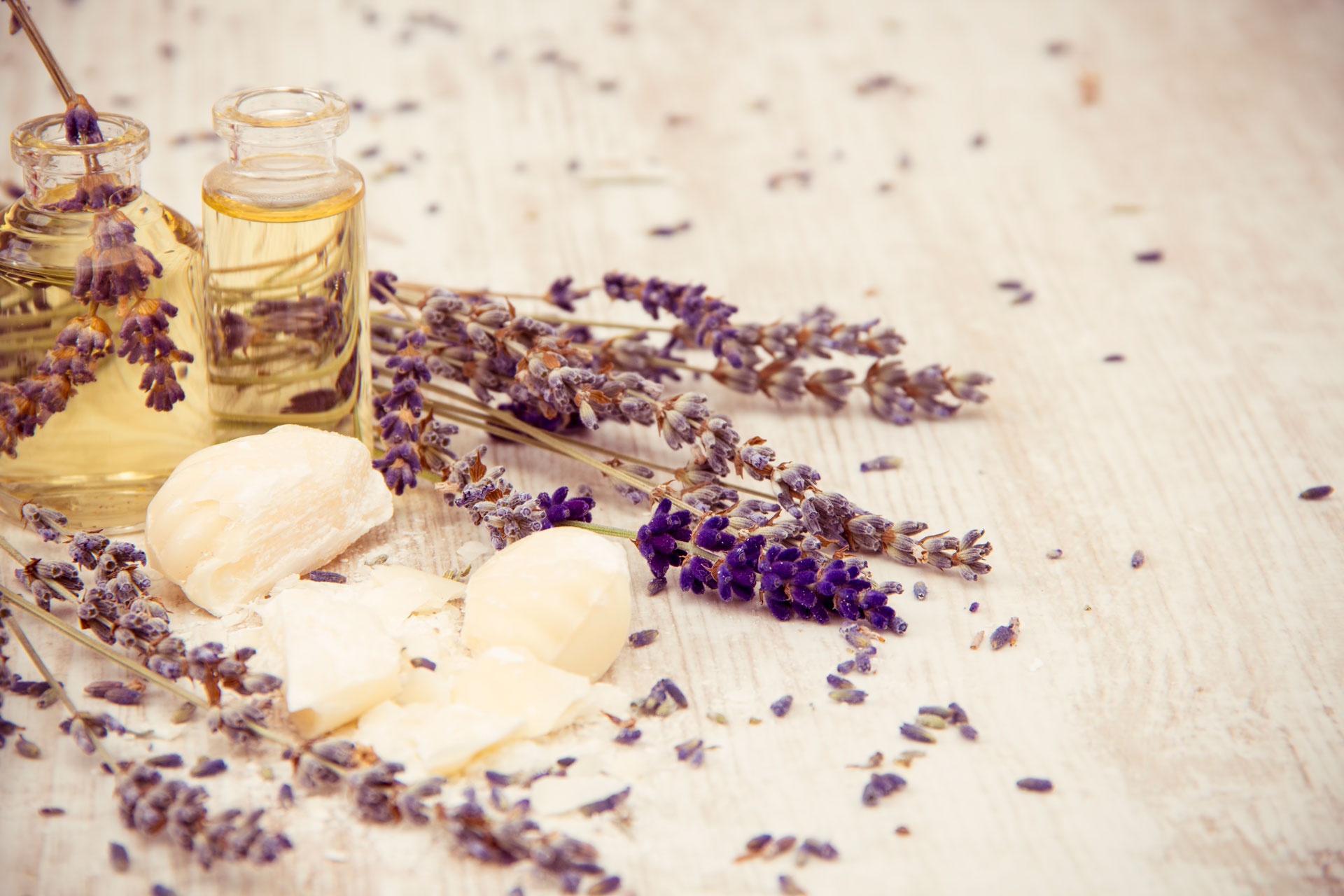
Perfumery teacher and natural beauty extraordinaire Karen Gilbert shares her top tips and recipes for creating your own beauty products at home…
‘Facts not fear’ is Karen Gilbert’s beauty philosophy. Whilst the cosmetics industry is advocating for more organic, transparent and zero-waste beauty products – think Gwyneth Paltrow’s Goop, Pai, and Herbivore Botanicals, to name but a few – there are many misconceptions about creating your own natural beauty products from home. Is it safe? Will the products work? Are the ingredients difficult to get hold of?
We’ve enlisted the help of Gilbert to clear up some of the confusion. An aromatherapy expert and author of A Green Guide to Natural Beauty, here she gives us the lowdown on DIY beauty; the dos and don’ts, her go-to ingredients, plus her tried and tested recipes for a delicious homemade hemp & honey lip balm, herbal bath bags, perfume oil and variation cleanser.
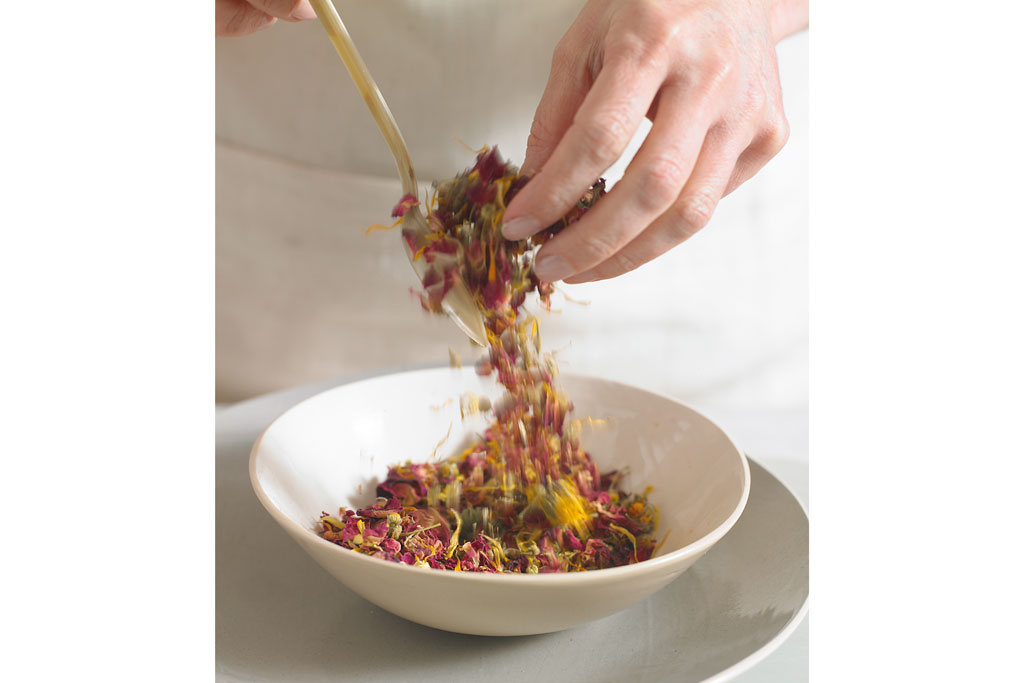
Why might people be apprehensive about creating natural beauty products from home?
Years ago, people didn’t really know what was in their skincare products and couldn’t get access to the ingredients – that’s not true now. There is so much information and recipes online, people are often nervous about getting it wrong and knowing whether something is safe.
If you are nervous about approaching it, start with a really simple oil-based product such as a lip balm or facial oil – anything that doesn’t involve water, because the minute you introduce water into a product, you’re at risk of bacteria and contamination.
What are the benefits of natural beauty compared with commercial products?
I’m not one of these people who says you should use 100 percent natural all the time – it depends on the individual. We all want to be able to know what’s in our product, but you can create a really nice simple skincare range at home if you don’t want to buy products.
The benefit of commercial skincare is that you have the ingredients research that you wouldn’t necessarily be able to access at home. From the perspective of making anything which has to be rigorously safety tested and preserved such as an eye cream or a moisturiser, I would advise people to buy those products. The same goes for sunscreens or anything with an SPF. We see a lot of recipes online telling people to make their own sunscreens and honestly that is not safe to do; I would definitely recommend going commercial with those.
I don’t really draw a line between natural and synthetic ingredients. There’s a lot of benefit in both – it just depends on your own personal choice.
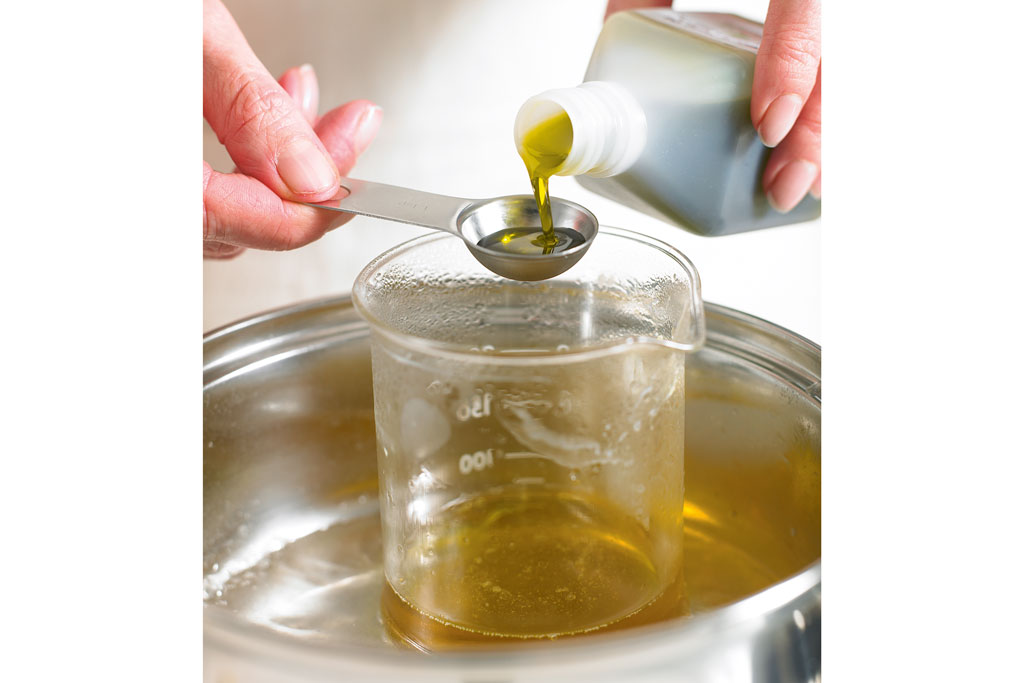
What are your staple ingredients?
It depends what you want to make. I love jojoba oil – it’s just a great all-rounder for most skin types. It’s always something that I have in my cupboard because it’s very close to the skin’s own sebum, so most people can use it without too much trouble.
For making things like balms and butters, I love a bit of beeswax, cocoa butter and shea butter as well. These are good staple ingredients and you can make most types of balm with cocoa butter, shea butter, a bit of jojoba oil and some beeswax, so I would definitely go for those.
Another oil that I would never be without is tamanu oil. It can be quite drying on the skin so I wouldn’t necessarily use it neat (you can put a little bit into a facial oil). It’s not an essential oil, it’s a base oil so it’s more gentle and has really helped any dry skin and spots. It’s got some amazing antibacterial and healing properties as well, so I would add that if you’re going to include one more thing.
Beeswax is another because that makes everything solid. For those who are vegan or don’t want to use beeswax, you can use jojoba wax instead. There are other waxes you can use that have a different texture and are softer, but jojoba wax isn’t quite as sticky on the skin so I would probably add that as well.
Karen Gilbert’s Natural Beauty Recipes
Hemp & Honey Lip Balm
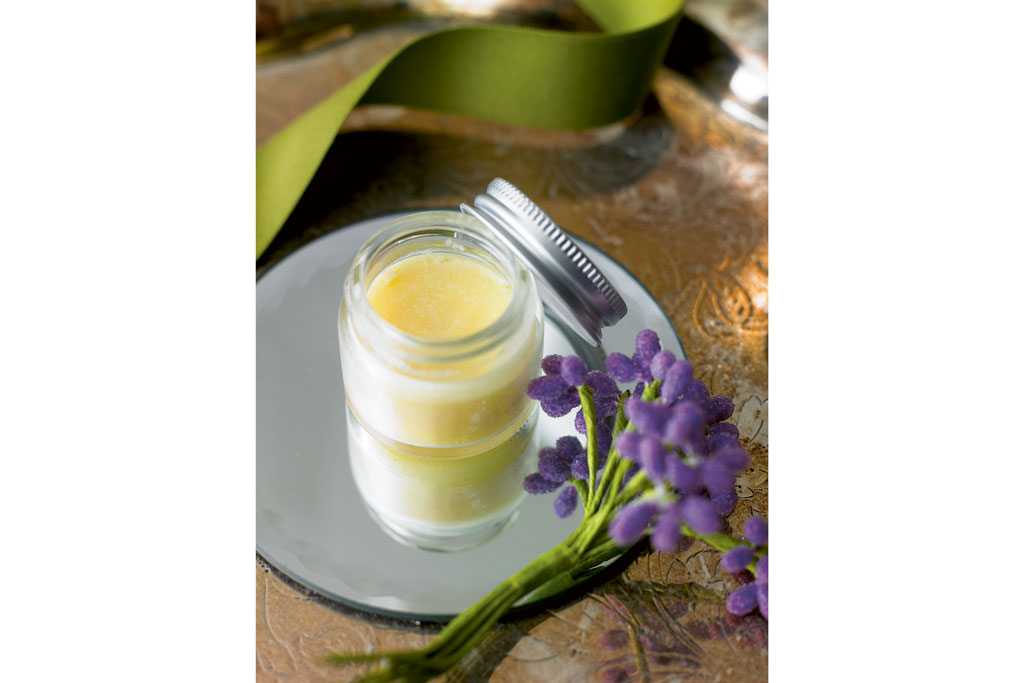
Ingredients
- 10g beeswax
- 10g cocoa butter
- 15g shea butter
- 4 teaspoons (20ml) almond oil
- 1 teaspoon (5ml) hemp oil
- 2 teaspoons (10ml) honey
Equipment
- double boiler – metal spoon
- small glass jug
- electric (or battery-operated) milk frother (see equipment chapter)
- 4 x 1⁄2fl oz (15ml) jars
Method
1. Melt the beeswax, cocoa butter, and shea butter in the double boiler along with the almond oil.
2. Add the hemp oil and honey and stir gently until everything is liquid. As honey is water- (not oil-) soluble, it will not totally dissolve with heating and will need to be mixed in the next step.
3. Remove from the heat and pour the hot mixture into the jug. Blend with the milk frother for a minute or so until the honey is totally mixed in and the consistency is thicker but still pourable.
4. If you do not have a milk frother, stand the jug in a bowl of cold water and keep stirring the mixture until it cools. As you mix, you will notice the mixture getting thicker and the honey will start to blend in. To help it along, you can put the jug in the refrigerator for a minute or two.
5. Once it is a thick but pourable consistency, pour into the jars to set.
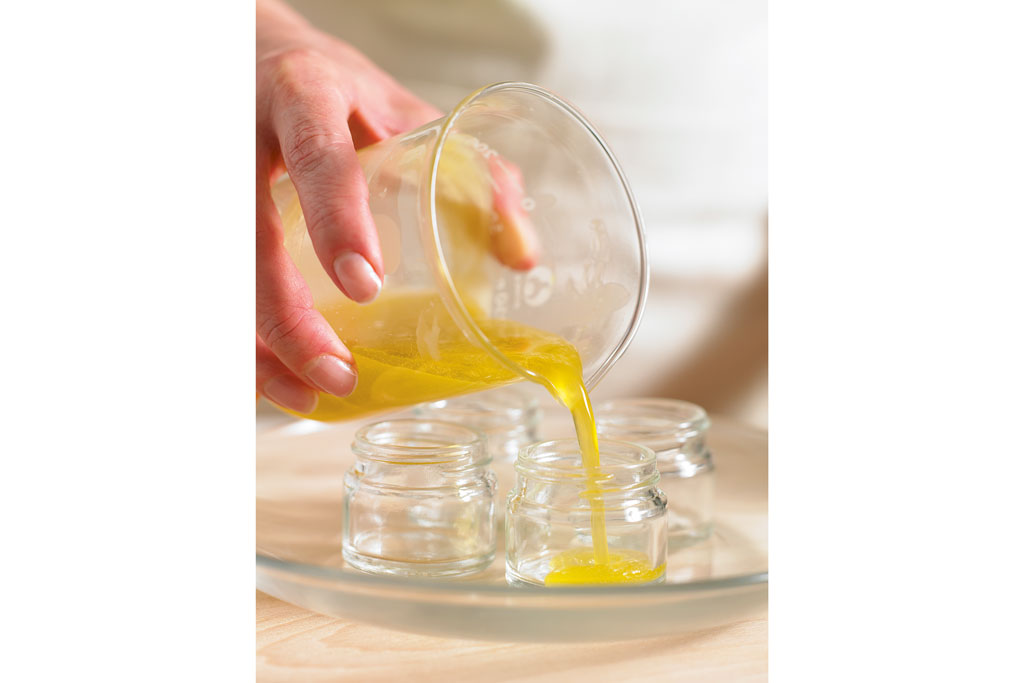
Herbal Bath Bags
I love to use fresh or dried herbs whenever possible in my bath and body products. In an ideal world, we would all be growing our own herbs in a beautifully manicured or naturally wild herb garden. If you are a keen gardener and have the space, it would be fabulous to have your own beauty garden filled with anything your local climate will allow to use in your homemade products. If, however, like me, you have no time, talent, or inclination for gardening, using dried herbs or liquid extracts is fine.
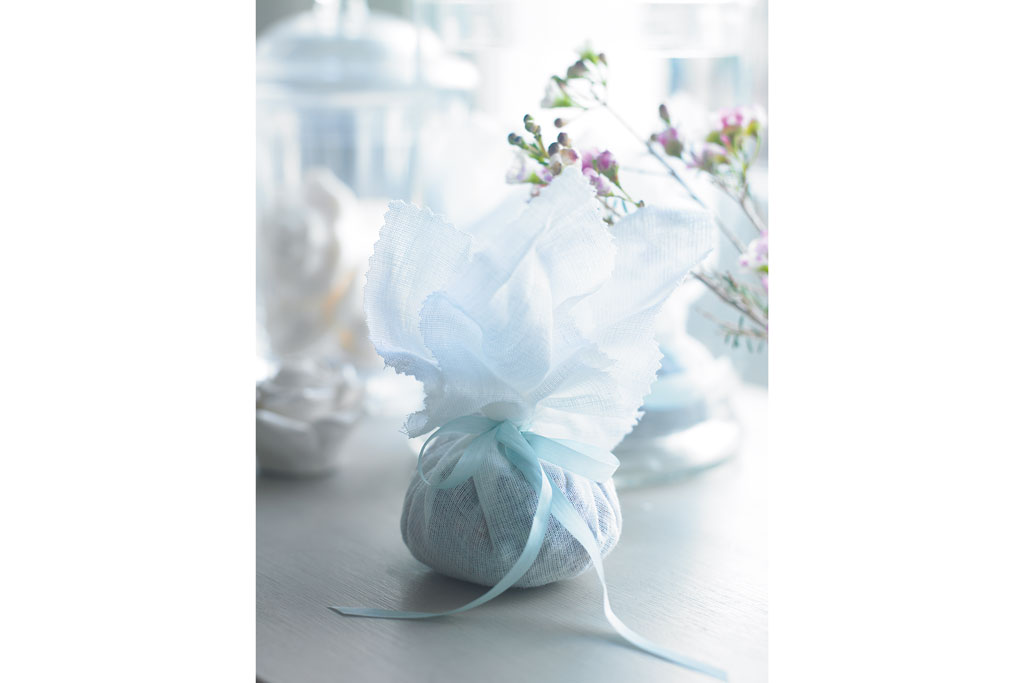
The easiest way to use dried herbs in the bath is with a traditional muslin bath sachet, which prevents the soggy herbs clogging up the plughole or sticking to your skin. Emerging relaxed and serene from a delicious herbal bath but covered in bits of soggy leaf and twig is not a good look!
Ingredients
For each bag you will need:
- 1 tablespoon of your chosen herb mix (see below) or just 1 or 2 herbs mixed together
- Purifying herbs: rosemary, nettle, fennel, lavender, rock salt, seaweed
- Relaxing herbs: chamomile, jasmine, hops, valerian, meadowsweet
- Skin-soothing herbs: chamomile, oats, calendula, marshmallow, chickweed
Equipment
- jar or bowl
- approx. 8in (20cm) square of muslin
- pinking shears
- elastic band (not essential but so much easier than trying to tie a ribbon with one hand!)
- length of narrow ribbon or natural twine, or a strip of muslin
Method
1. Mix the herbs together in a glass jar or bowl using equal parts of each herb.
2. Cut a muslin square with pinking shears and place a tablespoon of the mixture in the middle.
3. Place the elastic band over your thumb and forefinger and gather up the muslin into a pouch.
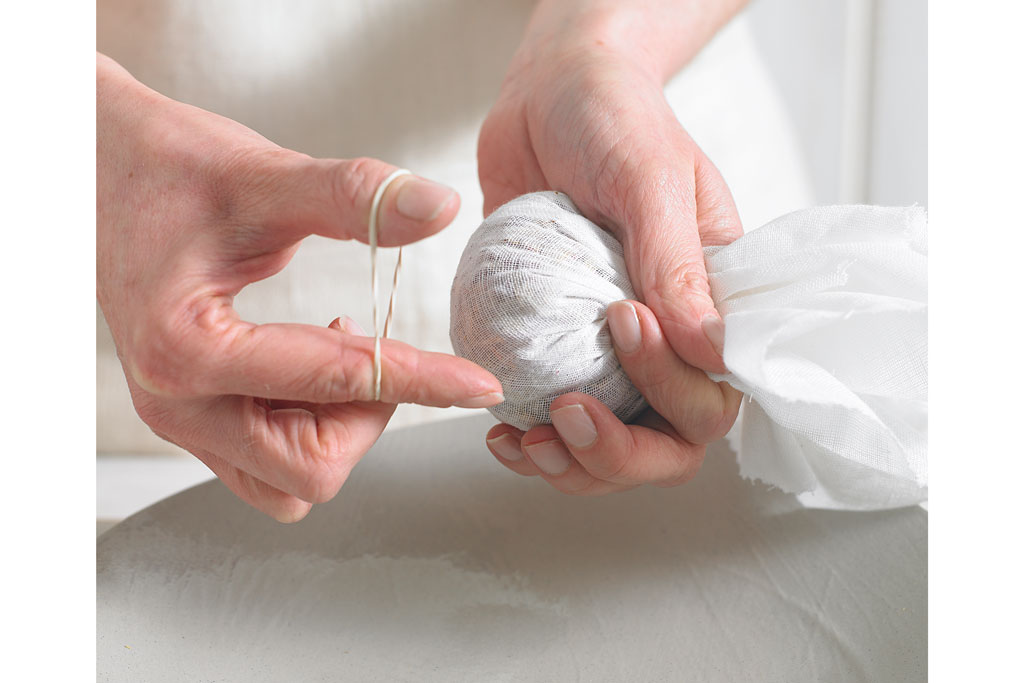
4. Secure the herbs inside with the elastic band, twisting and wrapping it several times.
5. Tie the ribbon, twine, or muslin to hide the elastic band.
Variation: Perfume oil
Most fragrances available today are a combination of natural and synthetic fragrance ingredients diluted in perfumer’s alcohol, which, if you want to make your own fragrances, is impossible to buy over the counter in most countries without a license. As there are more independent artisans now making fragrance, we have seen a bit of a resurgence in both oil-based and solid perfume— harking back to the practices of the Ancient Egyptians.
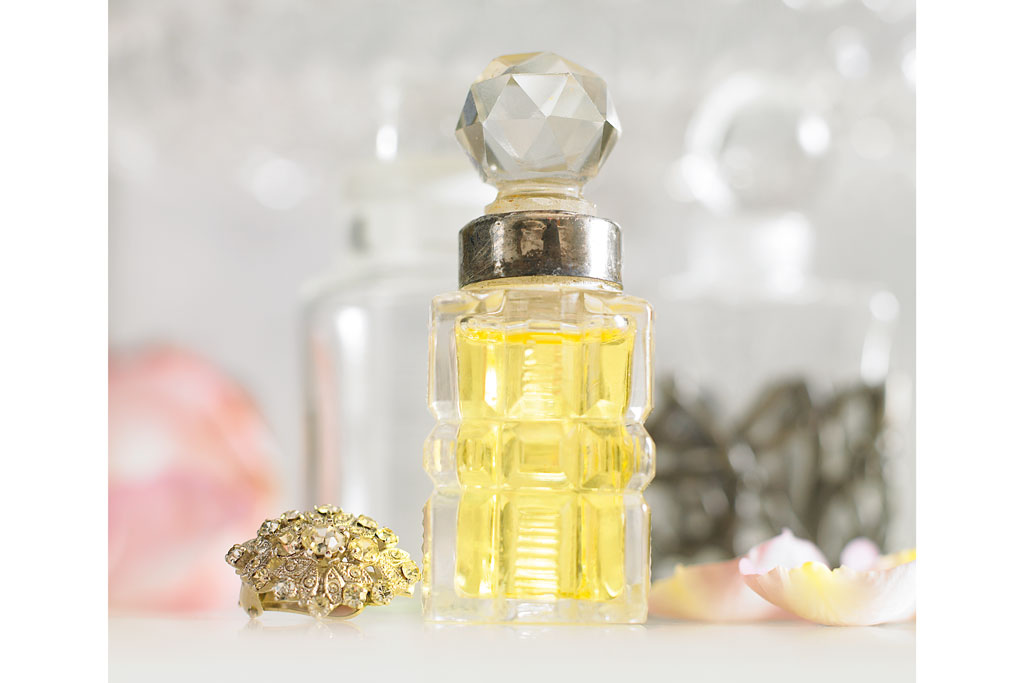
Although perfumery is outside the scope of this book it is one of my passions, so I felt I had to sneak it in somewhere. When writing the recipe for Cedarwood & Ylang Ylang Bath Oil on the previous page, I actually created the fragrance blend first in 2 teaspoons (10ml) of jojoba oil to make sure it smelled good, before diluting it in 31⁄2fl oz (100ml) of bath oil base. In fact, I would advise you to do this too when experimenting with blends in case they don’t work out, because it saves wasting a lot of base oil.
Here is the recipe to turn the fragrance for the bath oil into both an oil-based and a solid perfume, which can be stored in either a lip balm tin or antique trinket or pill box.
Ingredients
- 2 teaspoons (10ml) jojoba oil
- 7 drops ylang ylang oil
- 6 drops cedar oil
- 3 drops geranium oil
- 4 drops orange oil
- 2 drops vanilla abstract or C02 (or use jojoba that has been macerating with a vanilla pod)
Equipment
- airtight 1⁄2fl oz (15ml) glass bottle
Method
1. First pour the jojoba oil into the glass bottle.
2. Add the drops of essential oils carefully.
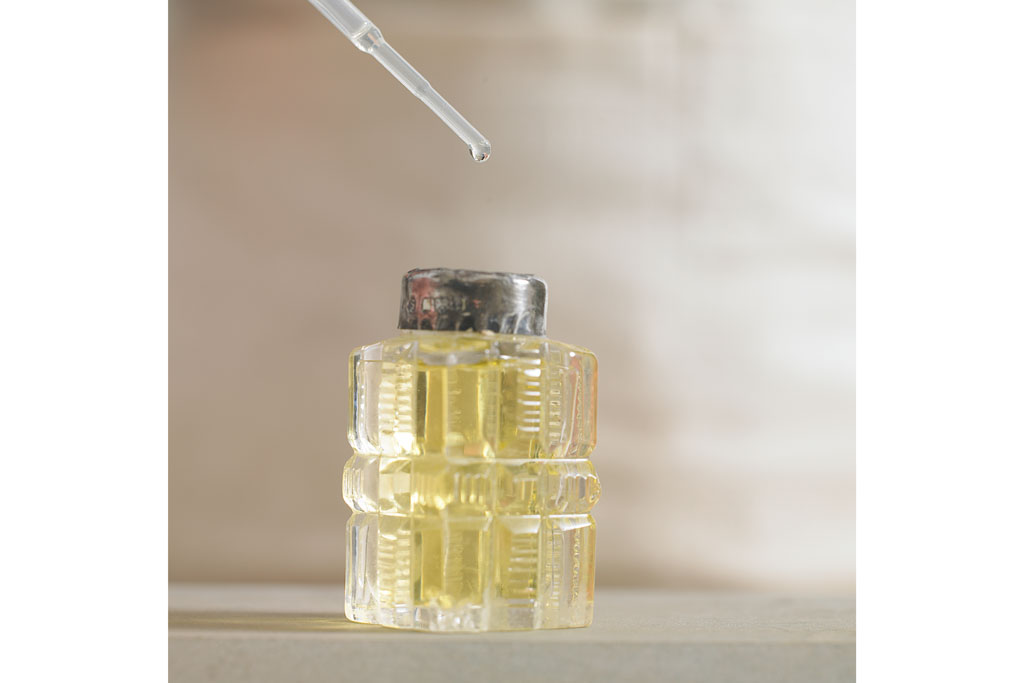
3. Place the lid on the bottle and shake to ensure all the oils are blended.
Cleanser Variation
A simplified cleansing balm recipe using your store-cupboard basics:
- 15g cocoa butter
- 20g coconut oil
- 15g shea butter
- 10g beeswax
- 2 tablespoons (30ml) almond or jojoba oil
- 2 teaspoons (10ml) runny or manuka honey
- 5–10 drops essential oil
Alternatives to rose absolute and patchouli essential oils that you could use are:
- Oily skin: lemon, lavender, tea tree
- Normal skin: geranium
- Dry/Aging skin: neroli, rose
All recipes extracted from Natural Beauty by Karen Gilbert ( CICO Books, £9.99). Photography by Stuart West © CICO Books. Visit Karen’s website at karengilbert.co.uk and follow her on Instagram @karengilbert
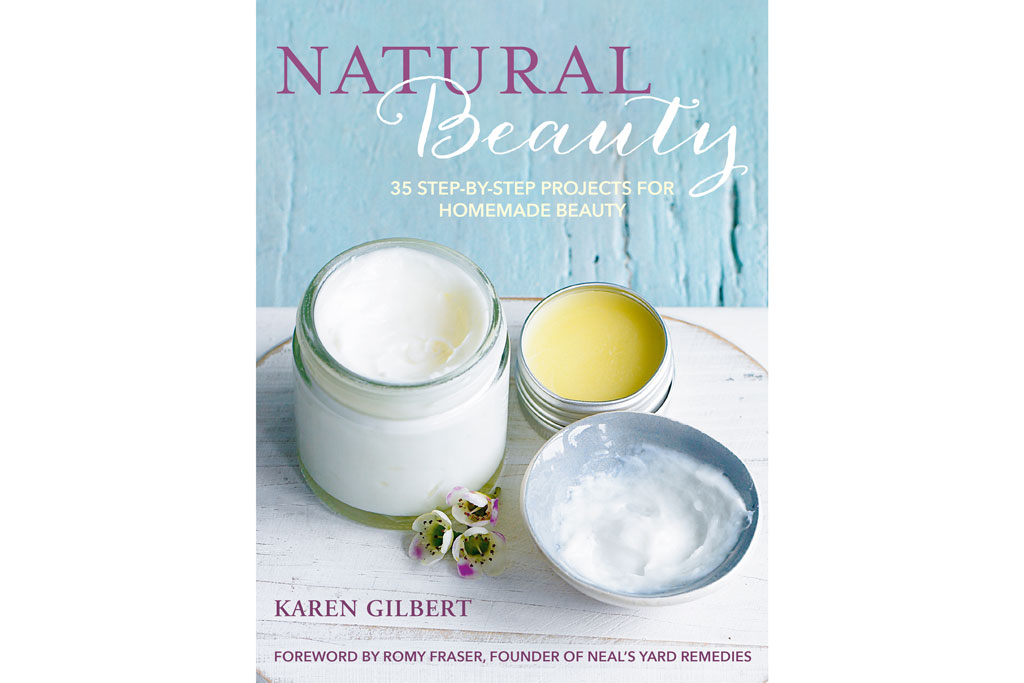
Featured Image: GettyImages
READ MORE: 10 of the Best Scented Candles for Your Home / How to Pamper at Home: Beauty Products to Treat Yourself to






